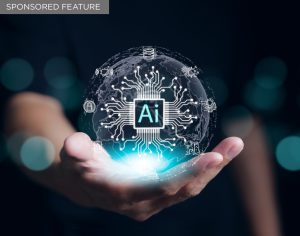Lately, the conversations on AI have transformed from the technology to the impending threat it has on jobs and industries if left unchecked and unregulated. People fear what they do not understand, and in a media landscape dominated by striking headlines of both AI’s paradigm-shifting capabilities and new breed of threats, this is totally understandable.
What has been greatly lacking from these discussions is a rational middle-ground and at times like these, perspective is key.
After all, who just 4 years ago would have believed that the global transition to remote working would have worked as effectively as it did? That’s not to deny the fast-paced work and challenges fearlessly embraced by everyone from IT to HR and cybersecurity teams. But the reality is we all made the new normal work because we had to. And while stargazing and futurology are very much engrained in our human DNA, when it comes to our working lives it’s often best to learn to adjust to the world as it changes.
Finding the middle-ground
Advancement in technology has reinvented what’s possible and our working lives have all been transformed as a result but make no mistake tech is far from the only part of the puzzle when it comes to building positive and successful workforce experiences. After all, tech, no matter its degree of sophistication, is built by humans and with that inevitably comes human error. Nothing is ever without its pitfalls so it’s vital to take a look at the bigger picture to determine how we can get the best out of tech all while ensuring human to human contact is not overlooked. AI is no exception. As human beings we still crave personalisation and the human touch that only comes from authentic human interactions. Ultimately, AI and automation software can bring a world of value to a business in terms of both employee and worker engagement, but it needs to be utilised thoughtfully, following a robust roadmap that ensures it’s making a difference where it matters most for employees.
Today’s new breed of worker is tech savvy, and they have a sharper than ever focus on what they expect from their workplace experience. Skills shortages and an acute war on talent are still stinging businesses enormously so against this tricky backdrop comes an urgent need to set the stage for success. This involves a strategy that carefully balances tech solutions and genuine human interaction to ensure businesses are firing on all cylinders.
Don’t forget the human touch!
When thinking about implementing AI it’s vital to factor in personalisation and the human touch. We might associate AI advancement with fuelling efficient or dynamic ways of working but human support can offer a level of empathy that AI simply cannot deliver. Just think – when your computer freezes five minutes before you’re due to present the work you’ve spent the last week on who are you going to call? Ghostbusters? ChatGPT? No – you’re going to call Neil from IT who can use remote access software to work his magic while you take a moment to catch your breath again. Change is always scary, but there is still nothing more authentic and appreciated than a human-to-human interaction which chatbots cannot yet replace. We also shouldn’t forget that AI implementation can’t be turned on overnight if you really are determined to weave it into your business operations effectively. It requires a clear focus on working out where it can bring impact and where the focus still must remain sharply on people and the human touch.
The popularity of AI tech tools and gadgets, spanning household Alexas to online chatbots, has brought value and convenience to day-to-day life but let’s not confuse familiarity with trust. We might have grown accustomed to AI but that doesn’t mean there isn’t a huge onus on tech companies to win over hearts and minds in the battle for consumer trust.
Considering the lack of proper regulations and governance around AI, there are certain subjects that people still find more comfortable discussing with a human rather than relying solely on AI. For instance, when it comes to making some kind of financial commitment many individuals, many prefer to speak to an expert either in person or via secure video conferencing. For example, ChargedEV, the UK’s leading supplier and installer of Electric Vehicle Supply Equipment (EVSE) for homes and businesses, uses Rescue Live Lens camera-sharing software to enable them to deliver ‘home video surveys’ with potential customers. This allows them to add that human touch to their assessment process and make it more personable and accessible to customers, all while utilising the power of technology to their advantage.
Conversely, for routine tasks and transactions the speed and convenience of AI is indispensable. It becomes crucial to evaluate the scale and significance of a task before automating it and to implement AI and advanced machine learning alongside human expertise rather than instead of it. This, in turn, frees up the time and brainpower of human workers to take on more strategic and dynamic work.
Knowledge is power for IT teams
AI should be used to empower staff to do more rather than make them fear they’ll be doing less to the point of redundancy. This needs to go hand in hand with human discernment to know when it is appropriate to use AI and when that human touch is required. Too often companies utilise a remote customer support model which allows staff to do no nothing more than the specific task they’re employed to do, they’re not empowered to add in that human touch or deviate from a strict plan to offer empathy or kindness to a customer. The metrics are all wrong and this needs to change. AI is about speed and cost saving, which are of course critical considerations, but what’s the opportunity cost of taking the human out of the story?
This ultimately comes down to the magnitude and urgency of a task and the human judgement required. In many customer support situations, the speed and efficiency that AI can deliver is extremely beneficial but, in some cases, particularly when looking at SMBs, where the pool of customers may be significantly smaller, this approach just doesn’t wash. High contact and high-level customer service is what can separate smaller, more boutique outlets from larger companies. It is about building up faith in trusted advisers and buying into people’s expertise. Even when closing deals of a significant size, more often than not, it is because there is a human face and relationship behind the transaction – not because of the efficiency of the process. There is an element of reassurance that AI cannot typically provide.
Working alongside AI to streamline success
It would be remiss not to factor in the plethora of benefits that AI can provide. IT teams are expected to see increased workloads as businesses continue to digitalise; a recent GoTo study found that 65% of businesses say their IT team workloads have increased over the last year, with 92% reporting that reducing this burden is a critical consideration when choosing their IT software. Implementing AI and IT automation tools into IT support in the correct way means common queries can be instantly responded to, freeing up human support staff to focus on more complex issues that require their expertise. A win, win for employees and customers alike.
As with every other technological advance since the industrial revolution – it’s a balancing act requiring consideration and discernment. Companies must empower employees to work in partnership with AI and educate staff on how and where automation technology will make teams more productive and efficient. With the right training and processes the right balance can be struck to recognise which tasks still require that high level human-to-human interaction and to continue to factor in the importance of the human-touch to maintain a high level of employee and customer satisfaction .
Share via:










































